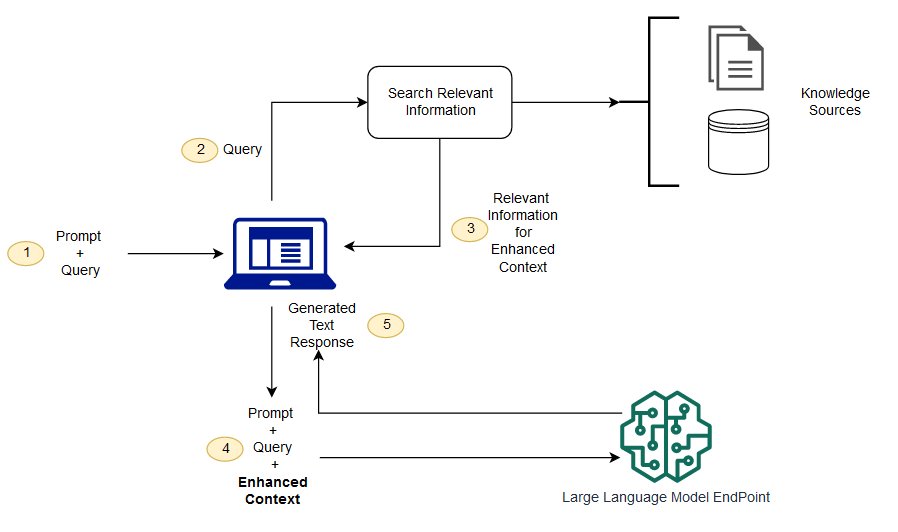73% of marketing departments are already using generative AI, and hundreds of services are popping up to help companies leverage GenAI in new ways.
The dirty secret? Nearly all of these technologies are built on the same small set of Large Language Models.
When everybody is using the same technology, how do you stand out? Delivering generic content at scale is not a competitive advantage — it’s just digital littering. It’s internet vandalism. It doesn’t serve users, and it’s unlikely to help B2B sellers.
How do you tap into the power of GenAI tools while keeping your content unique, fresh, and useful? By using retrieval-augmented generation.
What is Retrieval-Augmented Generation?
The most common AI tools (ChatGPT, Copilot from Microsoft, etc.) operate on a Large Language Model (LLM) that works from a database of information to complete tasks and answer questions. While these databases contain an unfathomable amount of information, they can quickly become out-of-date or produce content that is too generic for the work you’re trying to do.
AWS likens these models to a new hire: “You can think of the Large Language Model as an over-enthusiastic new employee who refuses to stay informed with current events but will always answer every question with absolute confidence.”
Creating passable content with out-of-the-box solutions is an amazing achievement, but the bog-standard version can only offer so much to your customers.
Retrieval-Augmented Generation (RAG) is one method to refine these AI models and help them understand your business and your customers better. This component allows the LLM to pull from new information sources rather than just its existing database.
Adding a RAG model to your LLM is like taking that new hire and putting them through all of your internal training until they become your subject matter expert on everything.
RAG models supercharge your AI features by allowing the LLM to pull from primary sources that are specific to your business and customers’ needs. Instead of getting a generic answer to a question, your prospect can receive a detailed breakdown of your features, costs, or any other question they might have.

The Benefits of Retrieval-Augmented Generation
Stronger, More Personalized Results
RAG models allow users to ask more pointed questions and reference specific sources. This is one of the most important features of RAG because it helps distinguish your AI models from others.
Example: You deploy an AI-powered chatbot on your website to handle large volumes of inquiries. By using RAG, your chatbot can refer to specific product sheets, whitepapers, and other materials that will help provide clearer, more precise answers.
6sense deploys RAG for the AI Writer feature within Conversational Email. By using RAG, the emails that are generated point to more specifics about a user’s company, the prospect’s previous engagements, and the products they’re most interested in.
Up-to-Date Information
LLMs work off a set of data from a specific point in time. That information can quickly become out-of-date, but the AI will still confidently point to it as correct. A RAG model allows you to constantly “train” the AI on the latest information, ensuring it’s always correct.
Example: You’ve deployed an AI feature within your product to help answer your customers’ most frequently asked questions. A static, one-time deployment of an LLM will be stuck in a certain point of time. Using RAG will allow your teams to constantly refresh the AI’s knowledge of your latest features and updates, ensuring that users don’t receive a bad answer.
Stricter Control
By using RAG, developers of your AI tool can place tighter restrictions on how the AI can be interacted with, reducing the chances of hallucination and potential risks associated with AI use.
Example: You want to integrate AI into your product, but you’re worried about the wide range of capabilities and sources typical tools pull from. A RAG can focus your AI model on only the specific sources you want, ensuring it doesn’t go rogue and cause potential headaches.
Conclusion
AI tools are making a big impact across the business landscape. But using out-of-the-box models can lead to inaccuracy and less personalized results.
Retrieval-augmented generation allows these AI models to reference specific sources and information to make them smarter and more focused. Using RAG in your business’s AI tools (whether it’s your own in-house product, or one used for day-to-day tasks) helps produce better results, keep information up-to-date, and allows for stricter control of outputs.
Interested in seeing how GenAI powered by RAG can make an impact on your business? Get a demo of 6sense’s Conversational Email!



